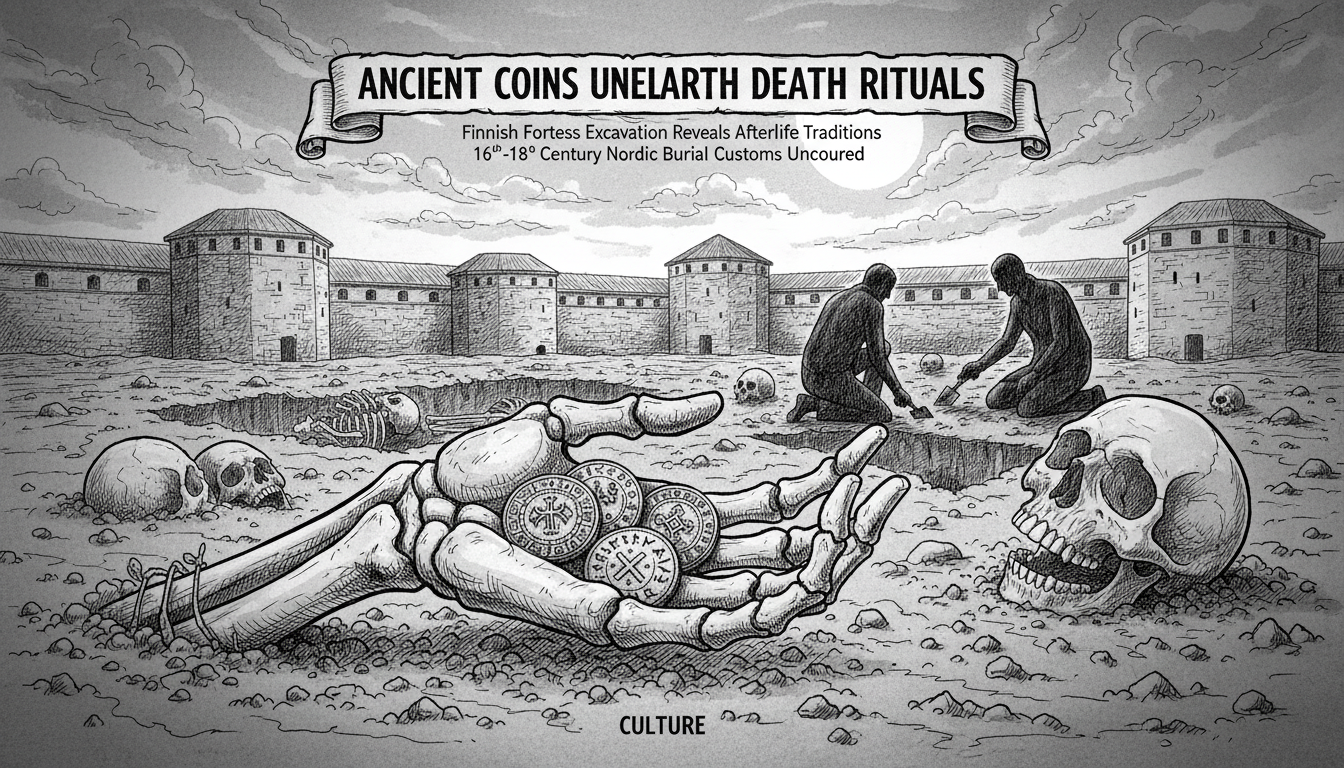Archaeologists made a remarkable discovery this autumn at Lappeenranta Fortress in southeastern Finland. They uncovered approximately 30 human remains during excavations at a historic cemetery. The bones revealed that several children and young adults were among the buried individuals.
The excavations represent the most extensive archaeological work ever conducted at this site. Workers were preparing to install new sewer lines behind the Cavalry Museum when the discovery occurred. Researchers wanted to examine the underground area before construction began.
What made these findings particularly intriguing were the coins placed with six or seven individuals. Most often, archaeologists found the coins in the deceased's hands. One skeleton appeared to have originally held a coin in its mouth.
Archaeologist Ville Laakso explained the significance of these discoveries. Similar coin findings occurred previously at Kauskila Chapel Hill in Lappeenranta. However, this marks the first time researchers have documented this practice at the fortress cemetery.
The tradition dates back to ancient folk beliefs about the afterlife. People believed the dead needed payment for Charon, the mythological ferryman of Hades. This coin would secure passage across the river Styx to the underworld.
These findings provide valuable insight into 16th-18th century burial customs in the Nordic region. The presence of children's graves with coins suggests families maintained these traditions even for young members. The discoveries help historians understand how ancient beliefs persisted through centuries in Finnish culture.
Lappeenranta Fortress has served as an important historical site since its founding in 1649. The location witnessed numerous conflicts between Sweden and Russia throughout its history. These recent excavations contribute to understanding daily life and death at this strategic military installation.
The archaeological team from Maanala Oy conducted the careful excavation work. They documented each finding with precision before construction crews could proceed with the sewer project. Such discoveries highlight the importance of archaeological surveys before modern development projects.
For international readers, these findings demonstrate how Nordic countries carefully balance historical preservation with modern infrastructure needs. Finland maintains strict protocols for archaeological examination before construction can begin on historically significant sites. This approach ensures that valuable historical information isn't lost to progress.
The discovery raises questions about how widespread these burial practices were across Finland. Researchers will likely compare these findings with other archaeological sites throughout the country. The coins themselves may provide additional clues about trade routes and economic conditions during the period.
What happens next with these historical remains? Finnish law requires proper treatment of excavated human remains. The archaeologists will conduct further analysis before likely transferring the skeletons to a museum or research institution. The coins and other artifacts will undergo conservation and study to reveal more about this fascinating chapter of Nordic history.

